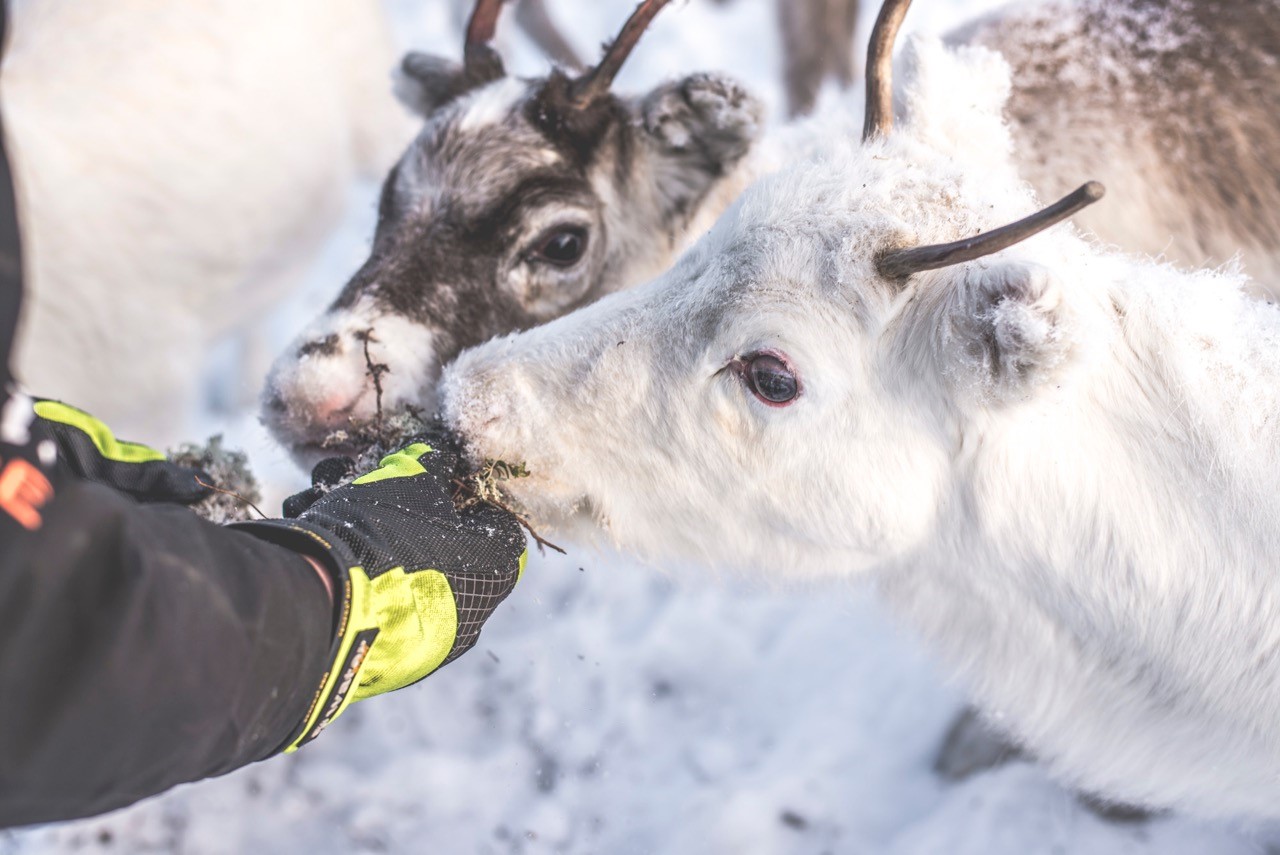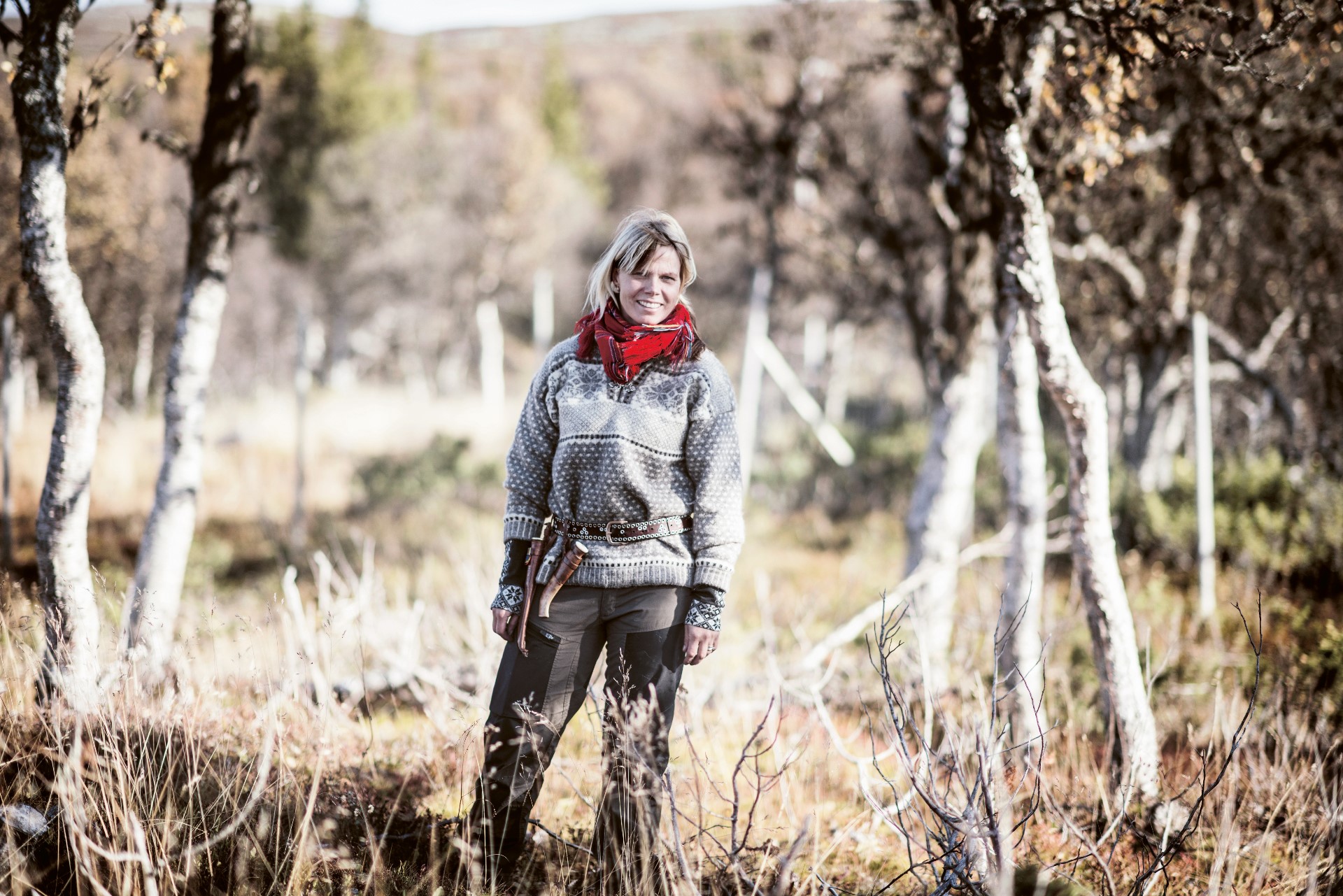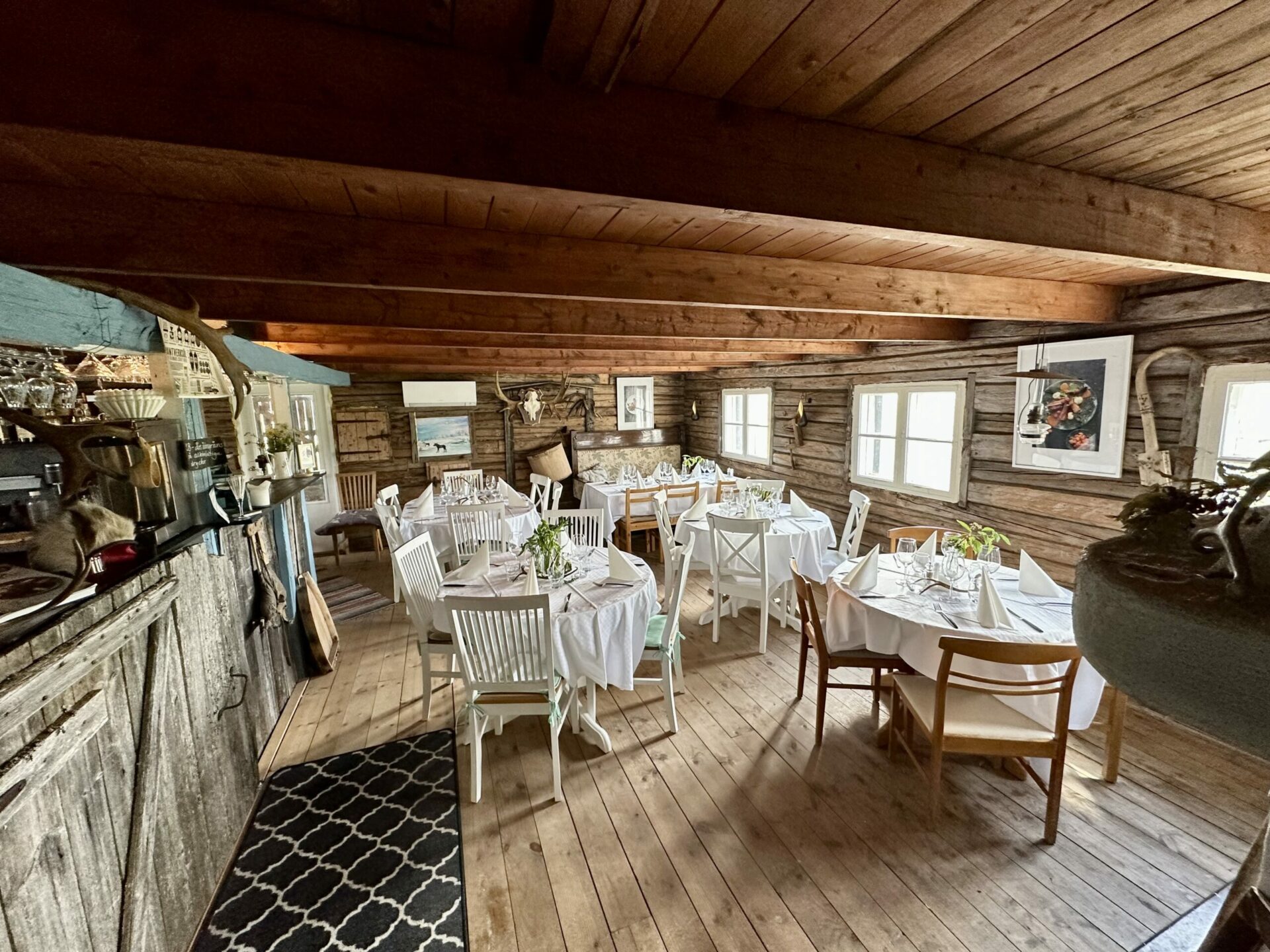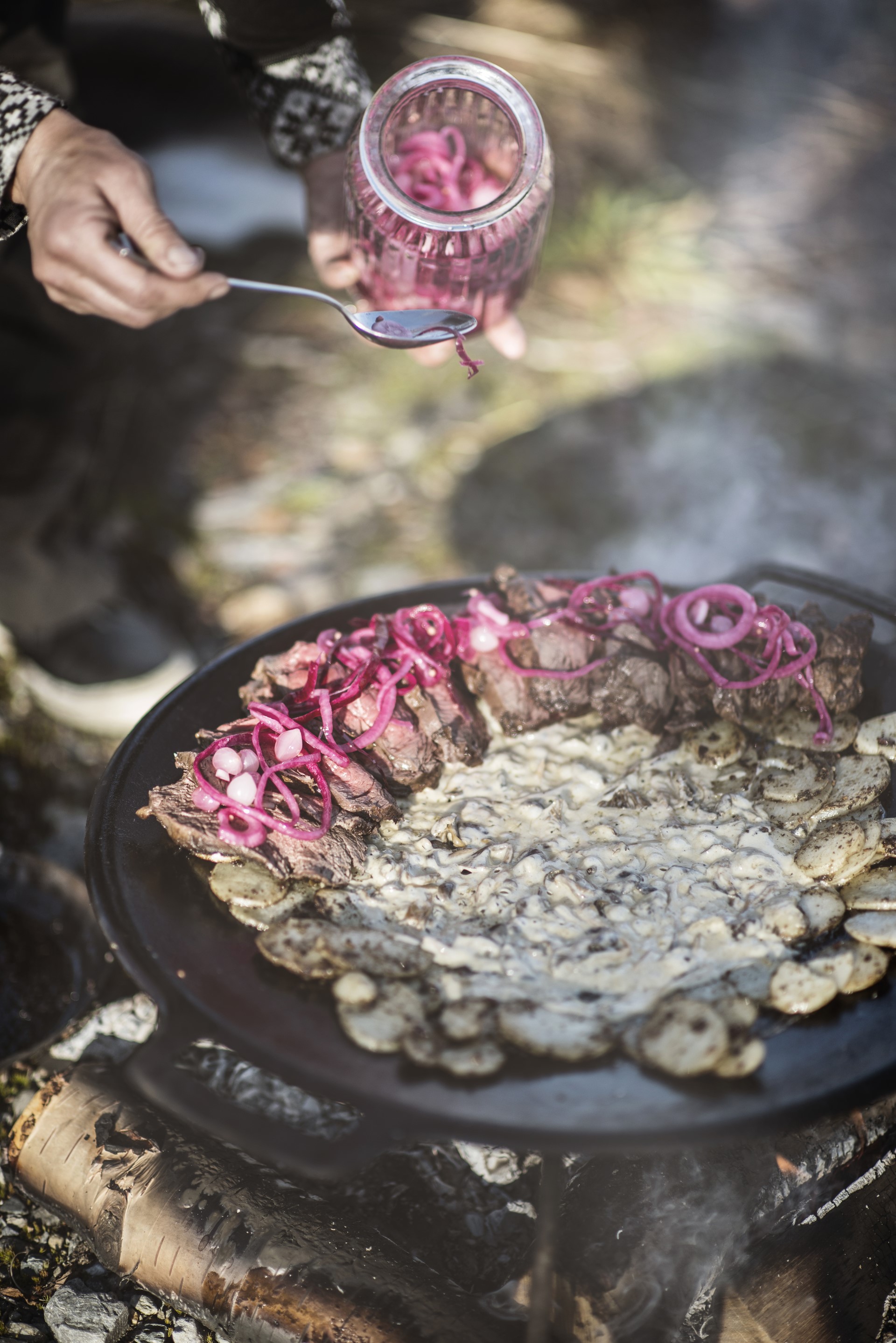To a visitor it may seem like any other buffet with loads of different kinds of foods, but the Julbord (Christmas table) is sacred to many Swedes. Of course there are differences between the south of Sweden and the north as well as there are themed Cristmas buffets, like the one served by Hävvi Elaine or Hävvi in Glen in Tossåsen with their exclusive Sami theme, and from family to family. But there are a few dishes that are more common than others:
- Sill (Pickled herring) – Comes in a variety of sauces. The most common is with onions and the second most common is a creamed mustard sauce.
- Julskinka (Christmas ham – A breaded ham sliced on order, often placed as the centerpiece of the table with a decorated fork for a handle and a knife on the side.
- Leverpastej (Liver paté) – You get better points as a host if you make it yourself.
- Rödbetssallad (Red beet salad) – Creamed with the red beets in little dices. Served with home made (or bought) Swedish meat balls.
- Ost (different kinds of cheese) – Both hard cheese and soft variations. Preferably local produce. Served with crackers and grapes.
- Janssons Frestelse – A casserole made-up of julienned potatoes, sliced onions, anchovy fillets and cream, baked in the oven.
- Prinskorv – Tiny sausages often cut at the ends to make them dressed to the party.
- Köttbullar (Swedish Meatballs) – No Christmas without it! In the north of Sweden they are traditionally made from minced moose meat.
There are lots of restaurants in Sweden serving Christmas buffet from December 1st and up to Christmas Eve. Large companies often treat their employees or customers to Julbord as a sign of good will. So if you feel like trying the Swedish Julbord, but not cooking yourself, a good way of experiencing the flavours is to visit a Christmas market in Sweden followed by a Julbord!
- Kokt potatis (Cooked potatoes) – To go with all the salty foods.
- Revbensspjäll (ribs)
- Lutfisk – A remnant of the fasting traditions from way back in time. It was common to dry the fish and soak it before Christmas for days to get all the saltiness out. Served with a white creamy sauce and spiced with some ground white pepper.
- Tunnbröd (thin leavened bread) – A must on Christmas tables in the north of Sweden.
- Ris a la Malta – Rice pudding with cream and vanilla sugar for dessert along with Swedish cookies, fudge and home made toffee called Knäck. Pigs made from marzipan is equally common.





